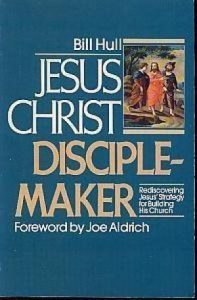Why are things the way they are? How can they change? Is the goal simply to achieve change or is it something more? To answer any of these, one must know how things got the way they are. And this is true in:
- Our personal lives
- The lives of our children
- Your church
- Our businesses
- This nation
Things Can Change!
Limitations of space do not permit an essay on how things got the way they are. It is simple enough, and obvious enough, that most of the blame lies at the church house rather than the White House. And the change almost anyone would like to see won’t come from the White House. It will come through the Church.
What we haven’t done very well is imitate our Master. You didn’t know that was a requirement? This is the command at the beginning of Ephesians 5:
Therefore be imitators of God, as beloved children; and walk in love, just as Christ also loved you and gave Himself up for us, an offering and a sacrifice to God as a fragrant aroma.
Jesus told us if we have seen Him then we have seen the Father. So if we want to see lasting, positive change we must ask ourselves if Jesus gave us an example. We are blessed to be able to say, Yes! And it’s not only is it possible to imitate His example, He commanded us to do so. Many of today’s problems wouldn’t exist if we were better imitators of Him. That’s why I said the blame lies largely at the church house.
Change Vs. Tranformation
Does an addict have a problem? Is generational poverty a problem? Can those things change? All answers are, Yes. But if we graded solutions as Good, Better, and Best, postive change would be Good and more change might be Better. But the Best grade is reserved for transformation. That was and is Jesus’ goal for those who follow Him. And He provided a pattern for transformation and a command to follow His example.
Before I share this rather simple example, let me say it can and will have a profound impact on:
- Individuals
- Parents
- Marriages
- Children
- Churches
- Cultures
Jesus’ Method Of Change
Our message today is, Come to church. Compare and contrast our message with what Jesus did. The first step in His transformation method is found in John 1:39. Notice:
He said to them, “Come, and you will see.” So they came and saw where He was staying; and they stayed with Him that day, for it was about the tenth hour.
Second, in Matthew 4:19 we see a slight change in Jesus’ invitation. Peter and Andrew were fishing:
And He said to them, “Follow Me, and I will make you fishers of men.”
The disciples had already been with Jesus. They had lived a little bit of daily life with Him. And His invitation for them to follow had a purpose. He wanted to make them fishers of men. That is more than simple change. It is transformation! But Jesus’ example is not over. In Matthew 11:28-29 we see:
Come to Me, all who are weary and heavy-laden, and I will give you rest. Take My yoke upon you and learn from Me, for I am gentle and humble in heart, and you will find rest for your souls.
Look at the verbs: Come, Take and Learn. Every person who has lived has experienced weariness. Accepting (taking His yoke) Jesus’ invitation allows one to cease mindless, futile, empty pursuits in this life. He rightly says it is easy because it is a labor of love (the Greatest Commandment). And loving Him above all else allows us to enter into His eternal rest.
And again, His example is ongoing. In John 15:4 Jesus said:
Abide in Me, and I in you. As the branch cannot bear fruit of itself unless it abides in the vine, so neither can you unless you abide in Me.
Things prior to this were tasks: Come see, Follow Me, and Come take and learn. This invitation is about our being. It addresses who one is on the inside. Abiding is the essential nature of one’s relationship wtih Jesus Christ. And His invitation is all about a relationship. We have made it a matter of religion. The two are very different.
The Final Step
The last step of Jesus’ transformation example is found in John 14:15 and John 15:14. Note that this command was given to His disciples after the Passover meal and just before Jesus was arrested and crucified. So in His timeline of transformational ministry this aspect came very late. In a short space of time, Jesus repeated the same idea:
If you love Me, you will keep My commandments. John 14:15
You are My friends if you do what I command you. John 15:14
So the final step is, Obey Me. That seems so at odds with modern church methods. We just tell people what to obey. Do this, don’t do that, and everything is fine.
So it’s no wonder we have this problem of college students dropping out of religous life, or ineffective churches, or a culture in decline. We just preach at people. Where are our invitations for others to come and see, to follow us, to learn from us, and to obey with us? That’s a great deal more demanding than, Come to church.
The good news is: transformation is always possible. Jesus said for us to make disciples of all nations. That means we start behind our own front doors, in our cars, in our churches, with our spouses, and watch Jesus change us from the inside out. That’s transformation. If we will do it, I am confident the culture around us will change one life, one family, and one church at a time!
Soli Deo Gloria!
This outline of Jesus’ method of discipleship was developed in Jesus Christ, Disciplemaker by Bill Hull. It is a classic resource that every believer should read and re-read. See this post to know why purchasing through the link above helps this ministry.









0 Comments